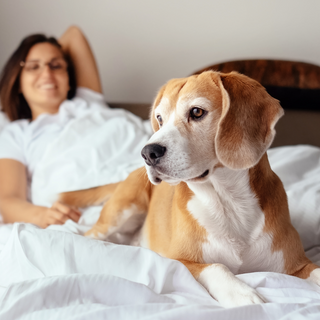Understanding Canine Fur
A dog’s coat is a remarkable biological system much more than just a layer of hair. Canine fur plays a critical role in thermoregulation, protection, and even a dog’s unique scent signature. Understanding the structure and function of your dog’s coat can help you better care for their skin, grooming needs, and overall health.
The Two Layers of a Dog’s Coat: Guard Hairs and Undercoat
At the surface of the skin, primary hairs, or guard hairs, form the visible outer layer of fur. These coarse, straight hairs protect the body from harsh elements like wind, rain, UV radiation, and debris. Guard hairs are designed to repel moisture and dirt, keeping the skin underneath dry and intact.
Beneath this layer lies the secondary hairs, or the undercoat. This soft, dense layer acts as a natural insulation system. In cold environments, it traps body heat, while in some breeds, it also helps buffer against heat during the summer. The undercoat thickens in winter and sheds in spring, a process finely tuned to environmental changes.
The Hair Growth Cycle: Anagen, Catagen, and Telogen Phases
The health and appearance of a dog’s coat are governed by the hair growth cycle, which occurs in three main phases:
- Anagen (Growth Phase): Hair follicles are actively producing new hair.
- Catagen (Transition Phase):Growth slows, and follicles shrink slightly.
- Telogen (Rest Phase): Old hairs remain in place until they shed naturally.
This cycle ensures a consistent renewal of the coat, maintaining its health and protective qualities. Dogs shed their fur primarily during seasonal transitions, often triggered by changes in temperature and daylight.

How Seasons Affect Your Dog’s Coat
Seasonal changes dramatically impact dog shedding and coat texture. As days shorten in autumn, the body responds by producing more melatonin, a hormone that signals the follicles to extend the anagen (growth) phase and create a thicker, warmer coat. In spring, longer days trigger a rise in prolactin levels, encouraging the shedding of the heavy winter undercoat and replacing it with a lighter summer coat.
Photoperiod; the amount of daylight is a more powerful driver of coat changes than temperature alone. Hormones like thyroid hormones also support the energy demands of hair growth, and any imbalance can affect coat quality, leading to excessive shedding, thinning, or dullness.
Breed-Specific Fur Adaptations
Different breeds have evolved coat structures suited to their native environments. Siberian Huskies boast a thick, water-resistant double coat engineered for Arctic winters. Their dense undercoat and long guard hairs protect them against snow, ice, and freezing winds.
Conversely, breeds like the Greyhound have short, fine fur that promotes heat dissipation, ideal for warmer climates. Selective breeding has amplified these traits, tailoring each breed’s coat to its historical working or living conditions.
Modern Life and the Disruption of Natural Cycles
Today, many dogs live indoors in climate-controlled environments, where artificial lighting and heating/cooling systems blur natural seasonal cues. As a result, dogs may not experience dramatic coat changes. Their shedding may be lighter or occur inconsistently throughout the year.
However, the internal biological clock, the hypothalamus and hormone cycles, still responds, even if the signals are weaker. This is why regular grooming and monitoring coat health remain essential, especially for double-coated breeds.
Why Understanding Dog Coat Health Matters
Maintaining dog coat health involves more than just brushing. Being aware of the natural shedding cycles, seasonal coat changes, and the role of light and hormones can help pet owners better support their dog’s wellbeing. Proper grooming, nutrition, and health checks are crucial for keeping the coat resilient, whether the dog lives in the great outdoors or a cozy living room.
Key Takeaways
- Canine fur is a complex, living structure critical for protection and temperature control.
- Seasonal shedding is influenced by light, temperature, and hormonal changes.
- Breed, genetics, and environment play major roles in how a dog’s coat behaves.
- Indoor living can soften natural coat cycles, but biological processes still continue.
A healthy coat isn’t just about looks, it's a vital indicator of a dog’s internal health and their deep-rooted connection to the natural world.
- Choosing a selection results in a full page refresh.


